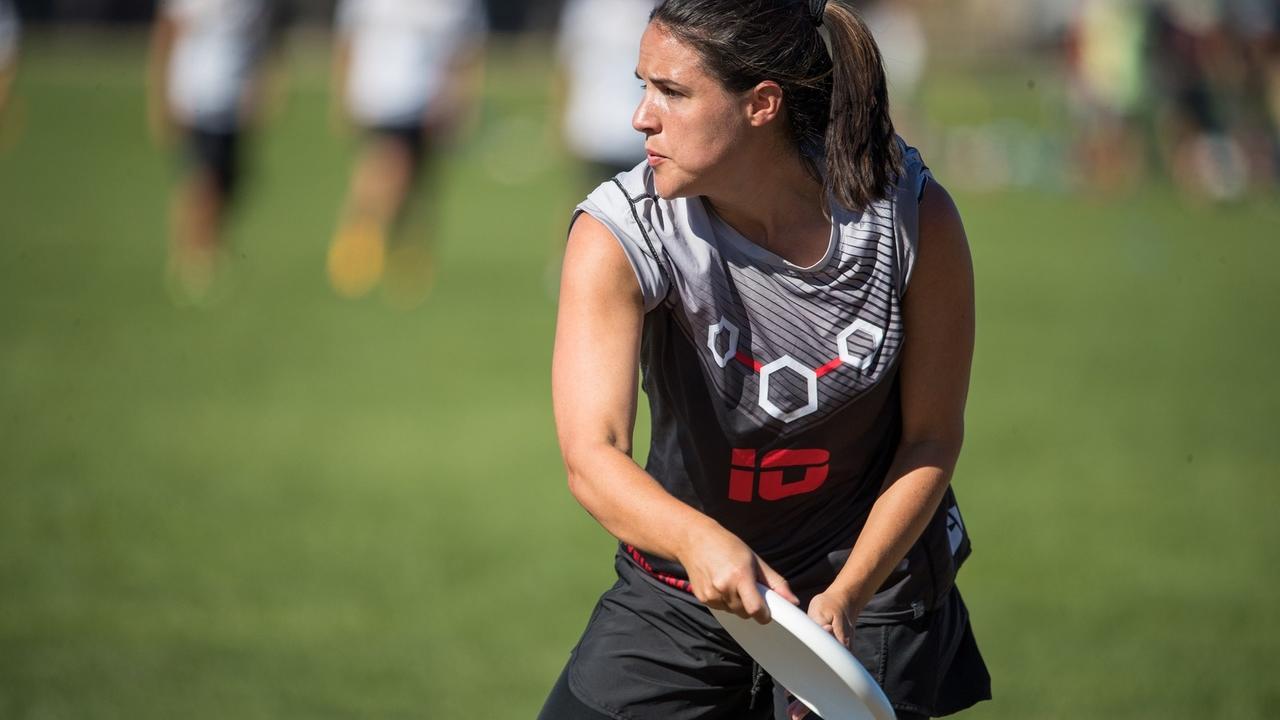3 Key Aims for Your Ultimate Frisbee In-Season Training

photo by Rodney Chen for Ultiphotos
Ultimate frisbee offers its athletes a real challenge in the length of its seasons, and as we move into it, a lot of players are asking how to fit training in with team practices in the most effective way.
People want a lot of things out of their in-season training: maintaining the gains they’ve worked for, staying healthy, avoiding burn out… but all these point towards the same end goal of performing at their best. With that in mind and with the club season kicking off in the US and Europe and building (for some) towards Worlds in Cincinnati, here are three simple aims that’ll help you.
1. Keep injury-free
If you’re building towards specific playing goals, the last thing you need is to miss training, or worse, the event itself due to injury. For this season, once the season starts, be sensible with the risk and reward of your training. Now is not the time to try something new that might be a gamechanger for your performance or leave you watching injured from the sidelines. If you wanted to make serious gains, the off-season was the time for that. Now, you have to focus on staying safely in good shape.
This may mean prioritising certain exercises—decisions which should be made with regards to your personal priorities and the demands on your body. Clearly, maintaining single leg strength is higher priority than trying to beat your bench press personal record. If you’re struggling for time, plan in advance to ensure that at least the most important exercises are covered each week.
Another key part of steering clear of injury is listening to your body. Skipping track because it’s raining is not listening to your body, it’s being lazy. But if your legs are constantly fatigued, an easier workout is a good idea. Even if you don’t feel tired, keep an eye on your performance. If it dips noticeably despite your consistent training, then you may need more recovery time. Sharp or consistent drops in performance on familiar exercises are signs that you need to back off!
2. Keep lifting
One of the biggest mistakes players make when it comes to in-season training is to stop doing it! Their logic is that the running involved in regular training is enough to maintain the strength they’ve built up. I’ll make this simple: they’re wrong!
Stop training and you’ll start losing strength in your legs within weeks. That lost strength would’ve reduced your chances of getting injured and helped you to make it all the way through a tournament over multiple days. Even lifting just once a week will go a lot further to keeping your legs strong that giving it up altogether. Do that and all your off-season gains will be for nothing.
The Ultimate Athlete Project plans for two weights sessions a week during the season—one upper body and one lower body session. With leg day (normally) early in the week, your legs can get an extra rest later on while you focus on upper body strength.
Another option is to do two full body days with different focuses. Splitting into heavy weights and functional strength sessions is a common way to go, and one I’ve detailed with example workouts in How to Maintain and Build Strength in Season in Two Hours or Less for example workouts.
3. Keep your neurons firing
If you think that resting up on a Friday will spare your muscles and have you raring to go on Saturday morning, think again! You can actually ensure your nervous system is ready to move into game mode by doing a short but high intensity workout the day before a tournament.
Not convinced? It's worth noting that this approach is taken in many professional sports. Studies have shown that power-type training the day before a competition is beneficial to the performance of power and team sport athletes.
You may already have your own power training routine, but if you want to see what I’d recommend, my Ulty Results post details an example of a good pre-tournament workout.
If you have a partner, consider doing some throwing instead of conditioning, but if you do stick to the conditioning, aim for half or a third of what you might do for a normal workout.
A Reasonable In-Season Schedule
Keeping the above principles in mind, you might ask what a typical weekly schedule could look like as you progress through the season. Combining lifting twice a week with throwing or agility and a pre-tournament workout, you can read all about my in-season weekly schedule.
With simple plan in place you can survive and even thrive during even the most gruelling season. If you want a tailored in-season plan that’s specific to ultimate, check out The Ultimate Athlete Project.

